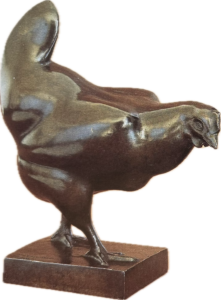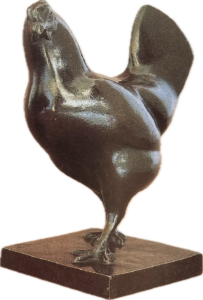Vu Cao Dam, 1940 – 1980, « Head », « Maternity », « Portrait of a friend’s son », or the poetic refusal of essentialization
As Le Pho himself told me – and in so doing, demonstrated a very elegant modesty: “Vu Cao Dam is the greatest Vietnamese artist“. In the light of a long life shared by both artists, professionally and amicably, in Vietnam and in France, the appreciation takes on its full value.
Le Pho worked in oil on canvas, gouache and ink on silk, and lacquer (which he soon abandoned because he was allergic to it). Mai Thu switched from oil on canvas to gouache and ink on silk. Vu Cao Dam was the only one of the three to practice sculpture in addition to gouache and ink on silk.
As our three sculptures perfectly demonstrate, this is a field in which he remains unrivalled to this day.
Although he sculpted far less than he painted, sculpture was his life’s work. Maliciously, when he lived in Vence – where he didn’t sculpt – he would say to his guests, with his gentle, luminous smile… :
“One day, I’ll return to the earth”.
At a very young age, his unprecedented talent burst through.
This is demonstrated, for example, by the sublime “Buste de mon père”, a bronze from 1927 (which would appear 4 years later at the Exposition Coloniale (see Catherine Noppe and Jean-François Hubert, La fleur du pêcher et l’oiseau d’azur. Arts et civilisation au Vietnam, Musée royal de Mariemont). When he executed this bronze, he was… 19 years old.
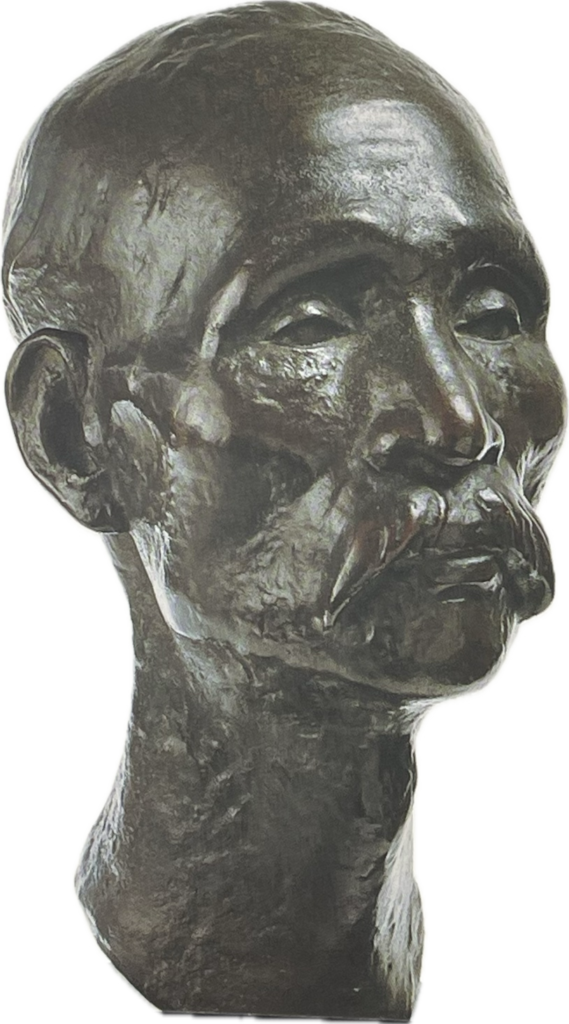
Or these gallinaces, dated 1928 (cf Jean François Hubert (Dir.) L’Âme du Vietnam, Paris, 1996 p.72):
Victor Tardieu was so impressed by his talent that he selected 7 sculptures by the artist for the 1931 Exposition Coloniale (below are descriptions of the works, in Tardieu’s own handwriting).
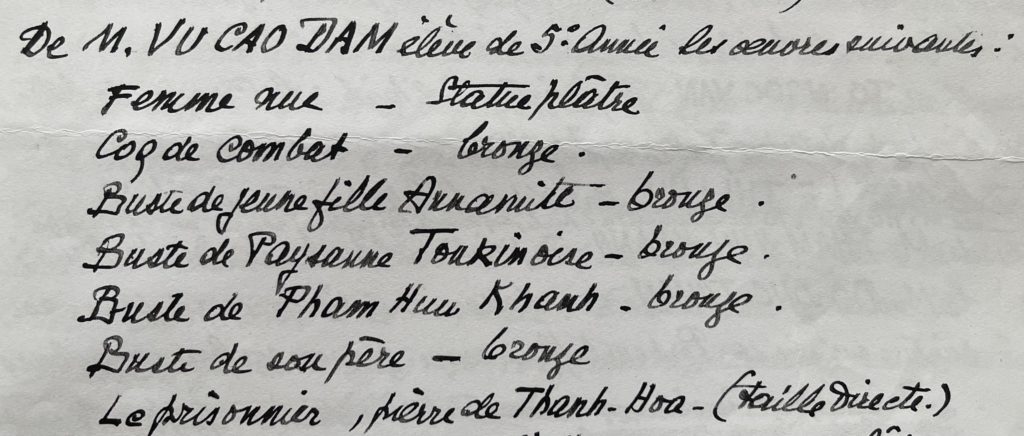
Including this “Buste de jeune fille annamite” (bust of an Annamite girl).
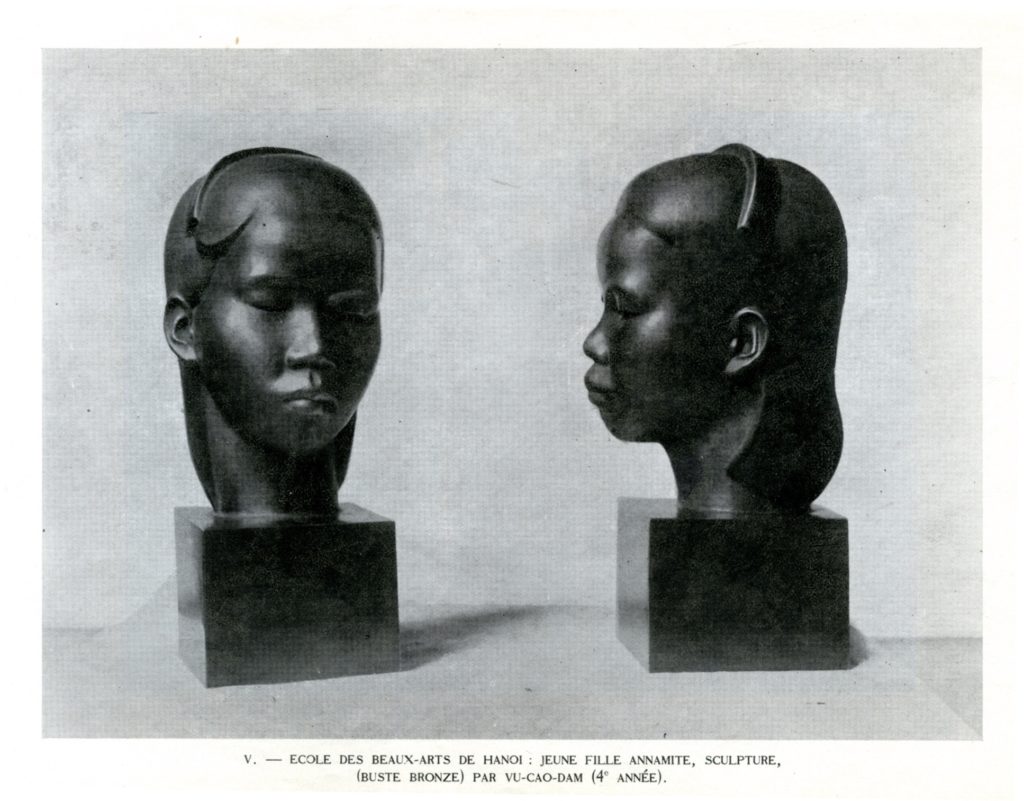
Vu Cao Dam’s style, from 1927 to the early ’30s, expressed a very ethnically typified representation (just look at the titles of the works…), using mass-volumes and rather smooth surfaces.
Cubic wooden bases for the heads would remain a constant in his work.
Our three unique sculptures sum up the artist’s immense talent.
In the early ’30s, he moved towards a less figurative style: less gendered, less ethnic, more universal, which in those days still meant more Western. The “Tête”, circa 1940, is a fine example of this, as “The Pugilist” by Paul Landowski (1875-1961) would not have disclaimed.

Then, as if struggling against the nagging feeling that the memory of the “homeland” is fading, the artist returns to his “roots”.
Themes are “re-vietnamized”, and execution reflects a lesser appeal to the “masses”. Detail is accentuated.
This is beautifully illustrated by the Maternité ( Maternity) whose slanted eyes, Tonkin headdress and ao dai are easily identifiable. Volumes are smaller and the surface is no longer smooth.

Vu Cao Dam – Maternity 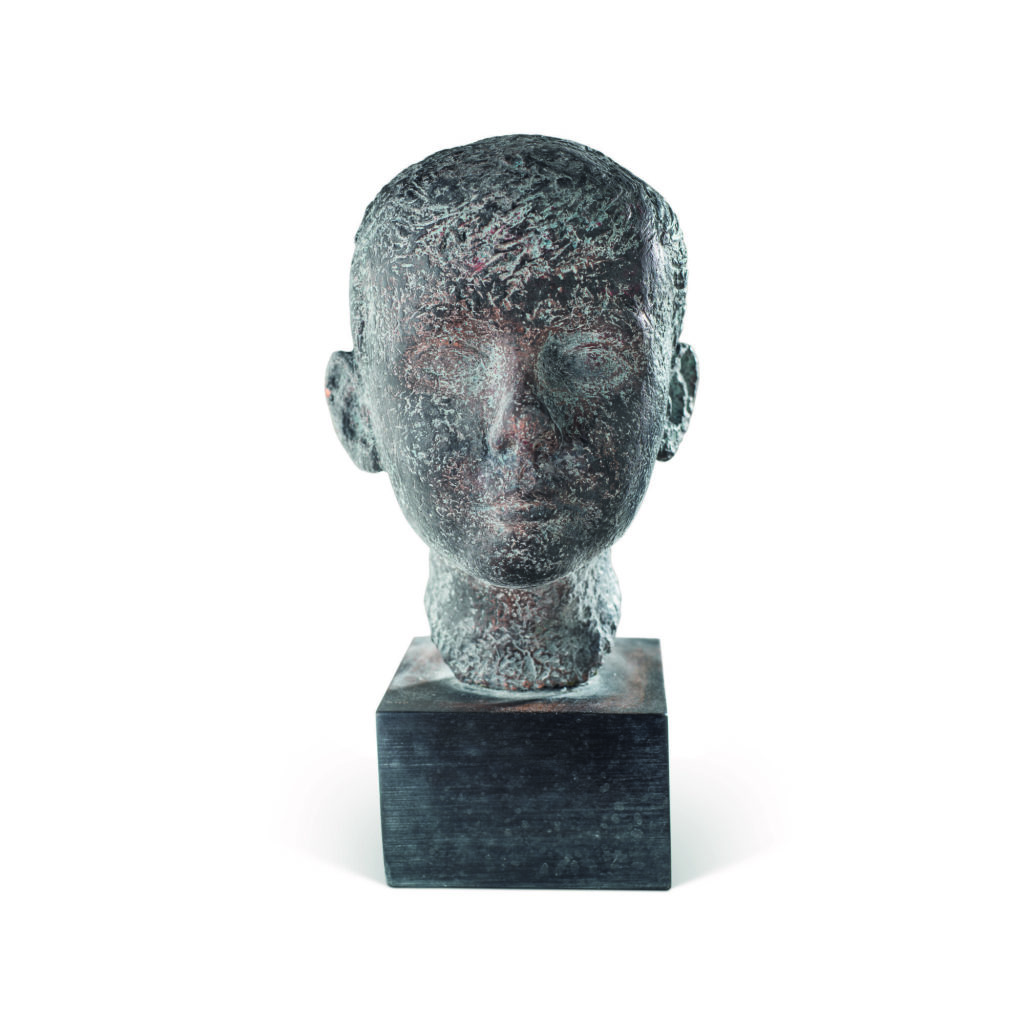
Vu Cao Dam – Son of a Friend
Between reminiscence and quotation?
A great tenderness too, like a refusal of Confucian austerity.
Vu Cao Dam, for this Maternity, as for « Le fils d’un ami » (Son of a Friend) certainly proceeds by modelling, but also by incisions and striations using wooden spatulas, some with wire ends.
Michel Vu, the artist’s son and an artist himself, born in 1941, gives us an unedited, first-hand account:
“I must have been seven or eight years old, and I remember my father setting up his sculptures – clay figures or busts – by raising a circular shape that became the base of the sculpture; for a head, it was the neck.
He would then assemble the sculpture by turning it on the saddle and using his fingertips to add small pieces of clay, sometimes the size of a lentil when he reached the finish, which he would sometimes wet with his saliva.
He’d say to me: ‘You really mustn’t get any air bubbles, as that would cause the sculpture to burst during firing. (private communication, May 4, 2024)
This upward modelling, this finishing touch where every gesture is an offering, creates in this Maternity, in woman and child, this attentive gaze, this charming smile, this fine nose, this half-open mouth and graceful neck. And in the “Son of a Friend”, that falsely aloof expression intended to mask the shyness inherent in age.
As we can see, Vu Cao Dam was a free man, the sole master of his art, with a lifelong poetic refusal to be essentialized.
Jean-François Hubert
